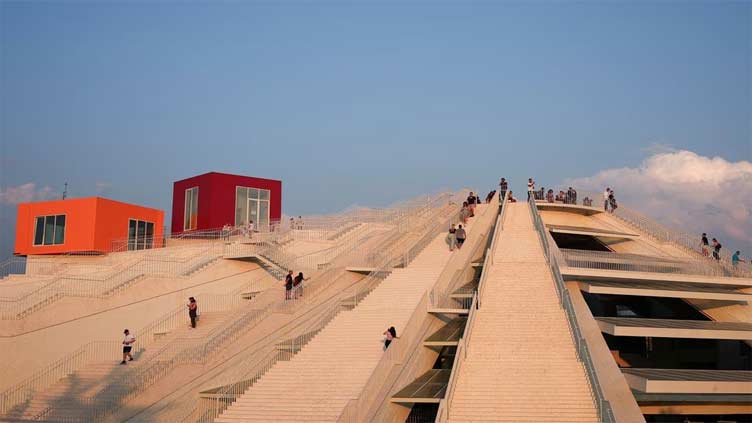Late Albanian dictator's museum transformed into tech centre for young

WeirdNews
The museum was finished in 1988, three years after Hoxha died
TIRANA (Reuters) - A museum built in Albania in the 1980s to honour longtime Communist dictator Enver Hoxha is being transformed into a computer training centre for young people, removing a final vestige of the country's isolated and repressive past.
The building once displayed personal possessions and huge photographs of Hoxha, who cut off Albania from the outside world under harsh Stalinist rule for 40 years, expanding literacy and health care but leaving most Albanians in regimented poverty.
Now the ex-museum, re-designed by Dutch architect Winy Maas, is preparing to host hundreds of young Albanians keen for training in computer technology and coding - part of the government's drive for closer links with the European Union.
/cloudfront-us-east-2.images.arcpublishing.com/reuters/BRREC3ESFRPFJECACV4N7H456Q.jpg)
The original architects, which included Hoxha's daughter Pranvera, designed the building in the shape of a pyramid glorifying the leader as an Egyptian-style pharaoh.
The museum was finished in 1988, three years after Hoxha died and two years before reclusive Communist rule collapsed, giving way to democracy.
Leon Cika, one of the museum's original curators, said that at the time it was completed, as Soviet-dominated regimes across eastern Europe were starting to crumble, he sensed it would prove "the last shovel for a monument to communism" in Albania.
Indeed, after the anarchic crash of Communism in the southern Balkan nation, the building's pyramid-like flanks - preserved in the renovation - were used by children as a slide in the absence of playgrounds.
The renovated, circular exterior consists of staircases that local and foreign visitors climb to gain a panoramic view of the capital Tirana, which has evolved into a modern, bustling city.
/cloudfront-us-east-2.images.arcpublishing.com/reuters/7OGDNNDCJZLK5CHK3LH5B5Z5WA.jpg)
The cubistic interior features what look like sets of stacked containers, which will serve as classrooms, rising several floors to the original glass cupola.
Albanians were for years divided over how to adapt the building in keeping with their developing democracy, with some bitter over Hoxha's repressive legacy demanding it be razed, and others wanted to preserve it as an architectural icon.
In subsequent years, it hosted a nightclub, TV station and even NATO officials during the alliance's intervention to halt the war in neighbouring Kosovo in 1999.
/cloudfront-us-east-2.images.arcpublishing.com/reuters/MM26EJRGEZL6RNHU3HYOQSL4LA.jpg)
"It was an architectural monument like no others," said Ilda Qazimllari, director of investments in the office of the Tirana mayor.
"On the other hand, the initial idea was to have a mausoleum to celebrate (Hoxha) and that's why people wanted to erase the only symbol left from communist times.”


